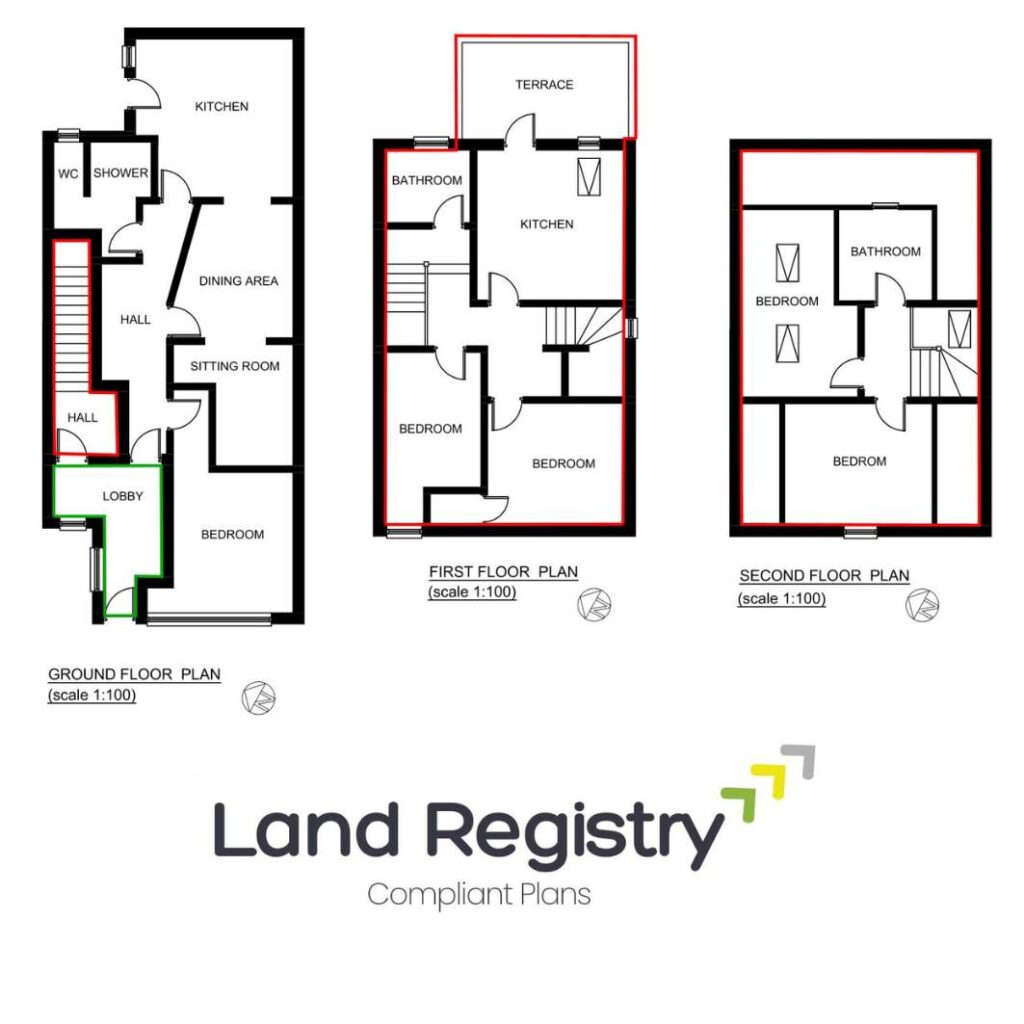The Land Registry Hub: Your Go-To Guide for Property Plans & Conveyancing
🛠️ Navigating the world of Land Registry, lease plans, title plans, and conveyancing can feel like a legal maze—but don’t worry, we’ve got you covered! Whether you’re a property owner, landlord, solicitor, or just someone trying to make sense of UK property rules, this blog is your one-stop resource for clear, practical advice.
From understanding lease plans to avoiding common conveyancing pitfalls, we break it all down in a way that’s easy to follow. Stay tuned for expert insights, tips, and updates to keep you ahead in the property game! 🏡📜✨

Land Registry Compliant Plans
Land Registry Title Plans vs. Lease Plans: What’s the Difference?
If you’ve ever dealt with property transactions in the UK, you’ve probably come across Title Plans and Lease Plans. At first glance, they might seem similar—both are property plans registered with HM Land Registry, and both are essential in defining property boundaries.
But here’s the thing: they serve very different purposes. Confusing the two could lead to delays, rejected applications, and even legal disputes.
So, let’s clear things up! What’s the difference between a Title Plan and a Lease Plan, when do you need each one, and why do they matter?
What is a Title Plan?
A Title Plan is an official map of a property’s general boundaries, as recorded by HM Land Registry.
Key Features of a Title Plan:
✅ Shows the general boundaries of a freehold or leasehold property
✅ Based on Ordnance Survey mapping
✅ Includes a title number
✅ Outlines the property in red
✅ May include rights of way, restrictions, or easements
Important: Title Plans are meant to be indicative only, meaning they don’t always show exact legal boundaries—just the general outline of the land or property.
What is a Lease Plan?
A Lease Plan is a detailed drawing showing exactly what part of a property is being leased to a tenant. If you’re granting a lease for seven years or more, HM Land Registry requires a compliant lease plan.
Key Features of a Lease Plan:
✅ Clearly outlines the leased area (demised premises)
✅ Shows any shared spaces or access rights
✅ Drawn to scale (usually 1:100 or 1:1250)
✅ Includes a north arrow and accurate measurements
✅ Compliant with Land Registry requirements
Unlike Title Plans, Lease Plans must be precise—down to exact walls, rooms, access points, and rights of way.
Title Plan vs. Lease Plan: Key Differences
| Feature | Title Plan | Lease Plan |
|---|---|---|
| Purpose | Defines the general boundaries of a property | Shows the specific area being leased |
| Required for? | Freehold and leasehold property registrations | Leases over 7 years |
| Level of Detail | Basic (general boundary only) | High (walls, rooms, access rights, etc.) |
| Scale | 1:1250 (urban) / 1:2500 (rural) | Usually 1:100 for buildings, 1:1250 for land |
| Mandatory? | Yes, for registered properties | Yes, for leases over 7 years |
| Land Registry Compliance? | Based on Ordnance Survey mapping | Must meet strict Land Registry guidelines |
When Do You Need a Title Plan?
You’ll need a Title Plan when:
📌 Registering a property with HM Land Registry (freehold or leasehold)
📌 Buying or selling land or property
📌 Checking boundaries for disputes or planning applications
📌 Confirming ownership of land
When Do You Need a Lease Plan?
You’ll need a Lease Plan when:
📌 Creating a new lease for 7 years or more
📌 Extending or modifying an existing lease
📌 Selling a leasehold property that hasn’t been registered before
📌 Splitting a property into multiple leasehold units (e.g., converting a house into flats)
Common Mistakes When Submitting Title Plans & Lease Plans
🚨 Mistake 1: Using a Title Plan Instead of a Lease Plan
Some people try to submit a Title Plan instead of a Lease Plan when registering a long lease. This won’t be accepted—Lease Plans require much more detail.
🚨 Mistake 2: Missing Shared Spaces in a Lease Plan
If a lease includes shared hallways, driveways, or gardens, they must be marked on the Lease Plan. Forgetting this could lead to rejection or disputes later.
🚨 Mistake 3: Incorrect Boundaries on a Title Plan
A Title Plan doesn’t always show exact boundary lines, so if you’re in a boundary dispute, you may need a specialist surveyor to prepare a more detailed plan.
🚨 Mistake 4: Not Following Land Registry Guidelines
Both plans must:
✔️ Be drawn to the correct scale
✔️ Include a north point
✔️ Use clear, high-quality mapping
Can One Property Have Both a Title Plan and a Lease Plan?
Yes! Most leasehold properties have both.
🏡 Example 1: A flat in a block of apartments
- The Title Plan shows the overall building and land boundaries.
- The Lease Plan shows the exact flat, shared hallways, and access rights.
🏢 Example 2: A commercial property lease
- The Title Plan shows the whole building’s land title.
- The Lease Plan outlines the specific shop, office, or unit being leased.
How to Get a Land Registry-Compliant Plan
If you need a Title Plan or Lease Plan, make sure it’s:
✅ Drawn by a professional surveyor or mapping expert
✅ Based on up-to-date Ordnance Survey data
✅ Submitted in a high-resolution format (PDF or printed copy)
✅ Checked for accuracy against the lease or sale agreement
Trying to submit an incorrect plan can delay your transaction and cost you extra fees, so getting it right the first time is key!
Final Thoughts: Which Plan Do You Need?
- 🏡 Buying or selling a freehold property? → You need a Title Plan.
- 🏢 Leasing a property for 7+ years? → You need a Lease Plan.
- 🏠 Buying a leasehold flat? → You need both a Title Plan (for the building) and a Lease Plan (for the flat).
Still unsure which one you need? Drop a comment or get in touch—we’re happy to help! 📜🏡✨
Contact Us
Call Us : 01375 267 277
We are open from Monday to Friday
08.30 AM - 17.30 PM
Surv Essex Limited
Building 13 Thames Enterprise Centre
Princess Margaret Road
East Tilbury
RM18 8RH
Our Services
- Lease Plans
- Title Plans
- Conveyancing Plans
- Licencing Plans
- Retail Plans
Quick Links
- Home
- About Us
- Pricing Plan
- Team
- Blog
- Privacy Policy
- Terms & Service

